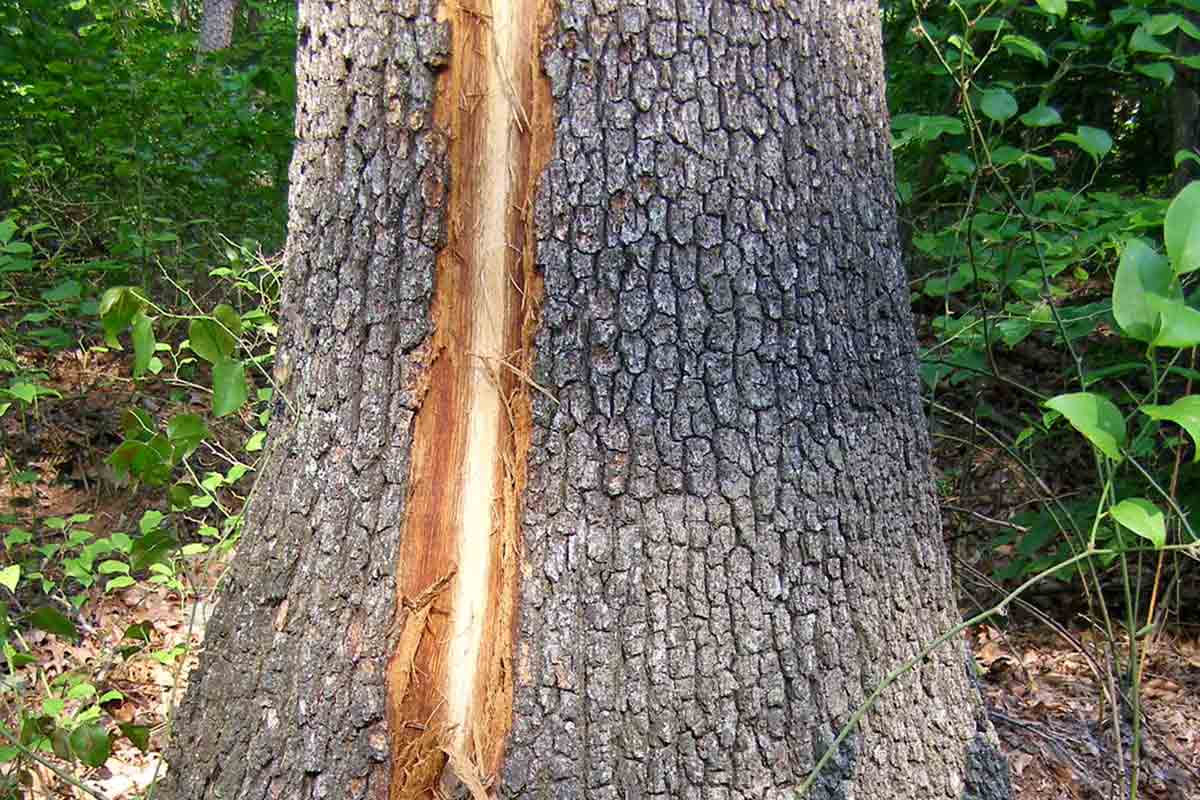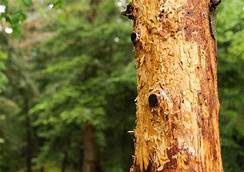Written by Stephanie Grant and published on https://www.bestpickreports.com/
If you are a tree person or have trees in your area, there are things you need to know about their maintenance. It is when you see damage on a tree, and there are different causes of it. For the sake of treatment, you need to recognize the exact cause of tree damage. And if it’s confusing, you can find an arborist, who can inspect your tree.
If there are chewed areas on a branch, they show squirrel damage. Furthermore, there are other sources of damage, such as floods, lightning strikes, tornadoes, and animal damage. And by having a piece of useful information regarding tree damage, you can look after them properly. So, here’s a list below of the major types of damage that trees usually come across.
Types of Tree Damage
Trees provide beautiful foliage almost year-round as well as cooling benefits during the dog days of summer. Tall, well-manicured trees can even increase the value of your home by approximately 10 to 20 percent, and studies have shown that they have a positive psychological impact on humans.
Because of the wealth of benefits trees provide to homeowners, it can be difficult to part with one. But if a damaged or dead tree on your property could jeopardize the safety of your home or loved ones, it’s time to have it removed. Below are different types of tree damage and some warning signs to look out for.
Tree Damage from Severe Weather
While trees can stand firm against rainstorms, snow, and sweltering days, severe weather can be tough on trees, especially if you live in a climate not used to certain weather conditions. To maintain the health of your trees, professional arborists recommend that you perform safety checks after experiencing any of the conditions listed below.
Flooding
Flooding can damage trees in three key ways:
- Harming the soil due to water saturation
- Creating chronic issues stemming from the rapid change in environment
- Toppling trees from the water’s sheer force
Flooding can also inhibit root growth, cause rot, suffocate seeds, and rob the soil—and thus the tree—of precious oxygen, among many other problems.
Soil and root systems act like brick and mortar, working together to create strength and rigidity. If the soil or the root system is compromised, disaster can follow.
Pro tip: Be on the lookout out for standing water after a flood, as this can also damage trees.
Lightning

Trees can sometimes survive a lightning strike, but if a lightning strike has reached the root system, the tree is likely dead and poses a danger to your home and the area around it. If you have an older, healthy tree that would be impossible to replace and is in an area prone to lightning, consider having a tree professional install a copper wire system to redirect electricity from the root system as a protective measure.
Severe storms
Storms can devastate anything unlucky enough to be caught in their path. The most violent of these weather events can have wind gusts of up to 300 miles per hour.
Though you might think you can easily see wind damage—like broken limbs, exposed and broken root systems, and broken trunks—many kinds of wind, tornado, and hurricane damage aren’t immediately visible.
Strong windstorms can twist tree trunks, which can be very difficult to spot. This twisting can separate the wood’s fibers, weakening the tree and making it susceptible to falling.
Other kinds of storm damage include wind-stripped bark, which can leave trees open to pests and other diseases, and bent or leaning trees, which can be prone to breakage.
Tree Damage from Pests
Like most plants, trees are susceptible to damage from insects and other pests. Some insects, like bark borers, hurt trees in visible ways. A bark borer can kill a tree by destroying the phloem (the cells that move nutrients throughout the tree). Bark borers are found all over North America, so if you see a ring of holes in your trees, you may have an infestation.
Other pests target areas where it’s harder to see the damage. One example is the balsam woolly adelgid (normally found in Tennessee, North Carolina, and the Pacific Northwest), which sucks out a tree’s sap, ultimately starving the tree of necessary nutrients. In addition to bark and sap, common arboreal pests can target leaves, seeds, and roots of trees.
Tree Damage from Environmental Changes
Frequently, trees are put at risk because they are unable to withstand the changes in the environment around them. Though these changes can come from mother nature herself, the situations mentioned below are due to human interaction.
Heavy pruning or topping
People who choose to prune or top trees may have the best intentions in mind, like shortening too-tall trees or keeping limbs away from electrical wires, but the result of these actions could be detrimental to the tree. Heavy pruning and topping leaves the tree vulnerable to insects, disease, and damage from storms.
Recent construction or excavation
During construction or excavation, tree roots are at high risk for damage. Sometimes, the roots are cut back to make way for changes in the landscape. If a tree experiences more than 50 percent of damage to its root structure, then it could be difficult for it to recover.
Warning Signs
If you believe that your trees have been exposed to any of the conditions above, it’s important to inspect them for the following signs:
- Large, dead branches
- Detached branches
- Large cavities or rotten wood on the trunk or branches
- Fungi or mushrooms on the base of the tree
- Cracks in the trunk or branches
- Fallen branches
- A lean in the tree
- Damage to the roots from construction projects
- Unusual changes to the leaves
Tree Inspections

A certified arborist can provide an in-depth inspection of the health of your trees if you happen to notice any of the warning signs mentioned above or have recently experienced a severe weather event. Many Best Pick tree companies employ certified arborists.
Tree professionals can often mitigate damage and improve the health of your trees. If any particular tree is beyond recovery, a professional can assist you with safely removing the tree from your property and planting a replacement.
Having a damaged tree that may potentially need to be removed can be difficult to accept, but it’s important that you keep your overall home safety in mind when evaluating your trees. Remember to inspect your trees after a severe weather event and at regular intervals throughout the year, and if you’re unsure about anything, that’s where the professionals come in.
Original post here https://www.bestpickreports.com/blog/post/types-of-tree-damage/.


